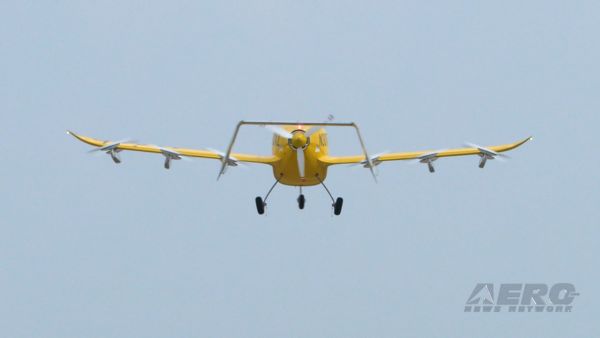Fri, Mar 15, 2024
After Years of Delays, the Lightning Graduates From Low-Rate Initial Production
The F-35 Lightning II, first taking to the skies in 2006, has finally been approved for full, genuine, actual showtime-ready mass production.

There are almost a thousand of the fighters out there in the wild already, but they've been built under provisionary Low-Rate Initial Production guidelines, limiting the scope of orders and allowing a little more variation until they could definitively identify the final mark to run with. It's a very delayed milestone, coming more than 20 years after the Joint Strike Fighter program really got to work on designing it, but it's finally come to pass. Years of teething issues and upgrade packages kept the F-35 on the waver wire, alternating between futuristic war-winner and caterwauling hangar queen. Right now, the Air Force is currently awaiting the rollout of Technology Refresh 3/TR-3 and the 4th block upgrade to the platform, which will hopefully iron out some of the irritations of the platform and modernize it with improved sensor suites, electronic warfare capabilities, and long-range strike accuracy.
Those who excitedly watched the development of the F-35 have had to watch a few faceplants along the way. The distinction of leaving LRIP isn't a tidal shift for the Lightning, since previous years have seen just as many aircraft produced as there would be under full production anyways. But it's a triumphant milestone for fans of the aircraft, though it's less a valedictorian and more a GED holder at this point. The Lightning has become undoubtedly capable by now - but it should be nothing but capable after 2 decades of development. Recent changes will improve it on many fronts, but they too will probably come with all new teething issues and problem-solving contracts. From now on, they can really let the production line fly, stamping out something north of 150 aircraft per year.
“This is a major achievement for the F-35 Program,” said Under Secretary for Acquisition and Sustainment William LaPlante. “This decision—backed by my colleagues in the Department—highlights to the Services, F-35 Cooperative Program Partners, and Foreign Military Sales customers that the F-35 is stable and agile, and that all statutory and regulatory requirements have been appropriately addressed. The F-35 Program is the premier system that drives interoperability with our allies and partners while contributing to the integrated deterrence component of our National Defense Strategy.”
More News
States That Current Process is Damaging National Aerospace Development US Senator Jerry Morgan is pushing the FAA to speed up the process for rocket launch licensing. He argues tha>[...]
From 2015 (YouTube Edition): Model Aviator Aims For Full-Scale Career While at the 2015 Indoor Electric RC Festival, referred to as eFest, ANN CEO and Editor-In-Chief, Jim Campbell>[...]
Dave Juwel's Aviation Marketing Stories ITBOA BNITBOB ... what does that mean? It's not gibberish, it's a lengthy acronym for "In The Business Of Aviation ... But Not In The Busine>[...]
Aero Linx: Cardinal Flyers Online The Cardinal Flyers Online Web site was created and is maintained by me, Keith Peterson. My wife Debbie and I have owned a 1976 RG since 1985. Wit>[...]
Clearance Void If Not Off By (Time) Used by ATC to advise an aircraft that the departure release is automatically canceled if takeoff is not made prior to a specified time. The exp>[...]
 Senator Pushes FAA to Accelerate Rocket Launch Licensing
Senator Pushes FAA to Accelerate Rocket Launch Licensing Classic Aero-TV: RJ Gritter - Part of Aviations Bright New Future
Classic Aero-TV: RJ Gritter - Part of Aviations Bright New Future Aero-FAQ: Dave Juwel's Aviation Marketing Stories -- ITBOA BNITBOB
Aero-FAQ: Dave Juwel's Aviation Marketing Stories -- ITBOA BNITBOB ANN's Daily Aero-Linx (10.27.24)
ANN's Daily Aero-Linx (10.27.24) ANN's Daily Aero-Term (10.27.24): Clearance Void If Not Off By (Time)
ANN's Daily Aero-Term (10.27.24): Clearance Void If Not Off By (Time)



